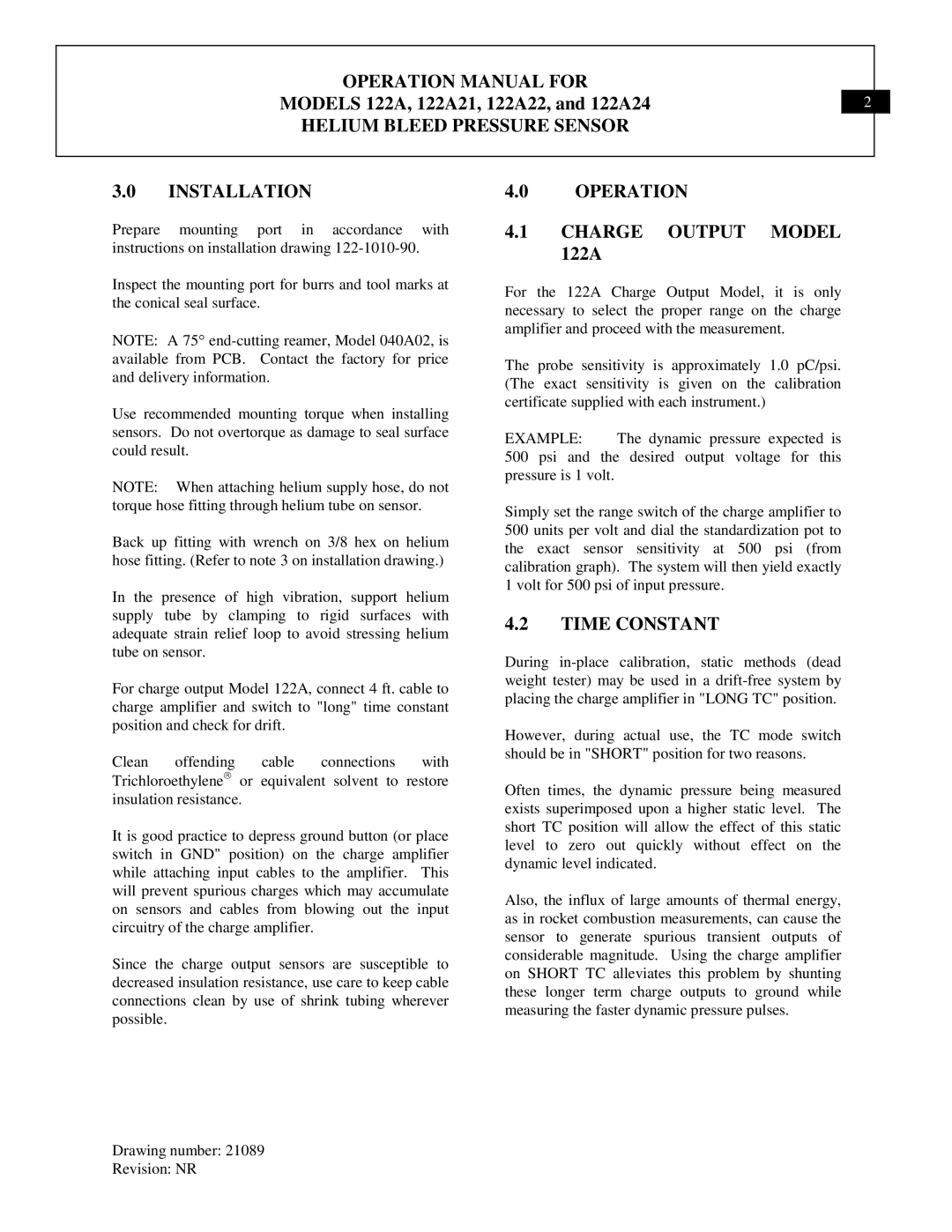
OPERATION MANUAL FOR
MODELS 122A, 122A21, 122A22, and 122A242
HELIUM BLEED PRESSURE SENSOR
3.0INSTALLATION
Prepare mounting port in accordance with instructions on installation drawing
Inspect the mounting port for burrs and tool marks at the conical seal surface.
NOTE: A 75°
Use recommended mounting torque when installing sensors. Do not overtorque as damage to seal surface could result.
NOTE: When attaching helium supply hose, do not torque hose fitting through helium tube on sensor.
Back up fitting with wrench on 3/8 hex on helium hose fitting. (Refer to note 3 on installation drawing.)
In the presence of high vibration, support helium supply tube by clamping to rigid surfaces with adequate strain relief loop to avoid stressing helium tube on sensor.
For charge output Model 122A, connect 4 ft. cable to charge amplifier and switch to "long" time constant position and check for drift.
Clean offending cable connections with Trichloroethylene® or equivalent solvent to restore insulation resistance.
It is good practice to depress ground button (or place switch in GND" position) on the charge amplifier while attaching input cables to the amplifier. This will prevent spurious charges which may accumulate on sensors and cables from blowing out the input circuitry of the charge amplifier.
Since the charge output sensors are susceptible to decreased insulation resistance, use care to keep cable connections clean by use of shrink tubing wherever possible.
4.0OPERATION
4.1CHARGE OUTPUT MODEL 122A
For the 122A Charge Output Model, it is only necessary to select the proper range on the charge amplifier and proceed with the measurement.
The probe sensitivity is approximately 1.0 pC/psi. (The exact sensitivity is given on the calibration certificate supplied with each instrument.)
EXAMPLE: The dynamic pressure expected is 500 psi and the desired output voltage for this pressure is 1 volt.
Simply set the range switch of the charge amplifier to 500 units per volt and dial the standardization pot to the exact sensor sensitivity at 500 psi (from calibration graph). The system will then yield exactly 1 volt for 500 psi of input pressure.
4.2TIME CONSTANT
During
However, during actual use, the TC mode switch should be in "SHORT" position for two reasons.
Often times, the dynamic pressure being measured exists superimposed upon a higher static level. The short TC position will allow the effect of this static level to zero out quickly without effect on the dynamic level indicated.
Also, the influx of large amounts of thermal energy, as in rocket combustion measurements, can cause the sensor to generate spurious transient outputs of considerable magnitude. Using the charge amplifier on SHORT TC alleviates this problem by shunting these longer term charge outputs to ground while measuring the faster dynamic pressure pulses.
Drawing number: 21089
Revision: NR
